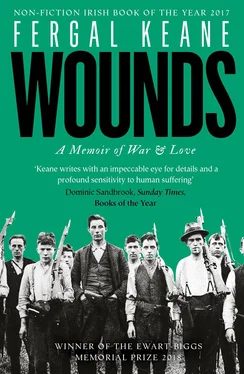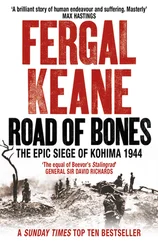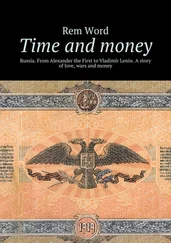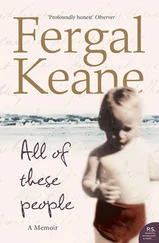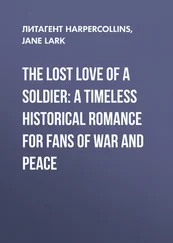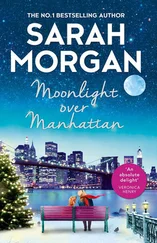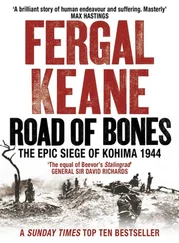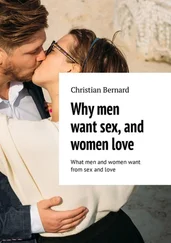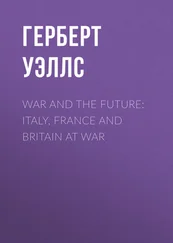The northern slaughter helped to shut down discussion of the War of Independence and the Civil War – what we now call the Irish Revolution – in families too. I knew only that my paternal grandmother and her brothers, and my maternal grandfather, fought the ‘Black and Tans’, the special paramilitary reserve of the Royal Irish Constabulary. Given all we had been taught as children about the old oppressor it was easy for us, who had no knowledge of blood, to accept that the IRA of the War of Independence would shoot the English to drive them out of Ireland. I was not aware that many of those shot were fellow Irishmen wearing police uniforms. In this reading the Old IRA followed in a direct line from the rebels who faced Elizabeth’s army at Listowel Castle. They killed the invaders.
Nobody spoke to me of the dead Irishmen who fought for the other side; much less of the fratricidal combat that engulfed north Kerry after the British departed in 1922. In my teens I was not inclined to enquire about the long-ago war. It did not interest me much then. I was already looking abroad to the stories of other nations. In Cork City Library, after my family had moved to Cork from Dublin, I devoured biographies of Napoleon and Bismarck. It was the big sweep of history that had me then. The relentless drumbeat of bad news from the north only pushed me to look further away from all of Ireland.
There was another, more painfully personal reason. When my parents separated in 1972 contact with my father’s family, with my grandmother and her people, dropped away. I would see her a couple of times a year at most. Even if I had had the inclination, and she had been willing to speak, there was never the time to ask Hannah the questions. In my mother’s family a similar silence prevailed. Although their father had fought in the War of Independence, my maternal uncles and aunts, with whom I spent most of my time, were largely apolitical. They bemoaned the tragedy of the north but felt helpless; their daily lives and ambitions were circumscribed by an attachment to family and to place, to Cork city where we lived a comfortable middle-class existence far from Belfast and its horrors.
It was only much later that I began to ask the questions that had been lying in wait for years. But by then those who might have given me answers were dead or ailing. Paddy Hassett, my maternal grandfather who fought in Cork, was long gone. He had told his own children nothing of his war service. My aunts and uncles knew only slim details of what had happened in north Kerry during the Revolution. It was only thanks to an interview broadcast in 1980, a year after I entered journalism, that I became aware of the darker history that had engulfed my family in north Kerry.
It took an English journalist, Robert Kee, to produce the first full television history of Ireland. Kee interviewed Black and Tans and British soldiers. He spoke with IRA men who described killing informers and ambushing soldiers. The combatants were old men now, sitting in suburban sitting rooms in their cardigans, calmly retelling the events of nearly sixty years before. It was also the first time I had heard any participant speak of what happened after the British left in 1922, and of how those who rejected the negotiated Anglo-Irish Treaty turned on the new Free State government. Men and women who had fought together against the British became mortal enemies.
I remember a sense of shock because the episode on the Civil War focused on an incident in north Kerry where my family had taken the Free State side. I knew the Free State army had carried out severe reprisals for IRA attacks during the Civil War, but the sort of blood vengeance of ‘Ballyseedy’ evoked the stories my father told me of English massacres. Not on the same scale, of course, but with an unsettling viciousness. In March 1923, in retaliation for the killing of five Free State soldiers in a mine attack, nine IRA prisoners were taken from Tralee barracks to the crossroads at Ballyseedy. One man survived the events that followed.
I listened avidly to the story Stephen Fuller told Robert Kee. He began by recalling the moment the prisoners were taken from jail in Tralee:
He gave us a cigarette and said, ‘That is the last cigarette ye’ll ever smoke. We’re going to blow ye up with a mine.’ We were marched out to a lorry and made to lie flat down and taken out to Ballyseedy … the language, the bad language wasn’t too good. One fellah called us ‘Irish bastards’ … They tied our hands behind our back and left about a foot between the hands and the next fellah. They tied us in a circle around the mine. They tied our legs, and the knees as well, with a rope. And they took off our caps and said we could be praying away as long as we like. The next fellah to me said his prayers, and I said mine too … He said goodbye, and I said goodbye, and the next fellah picked it up and said, ‘Goodbye lads’, and up it went. And I went up with it of course.15
The flesh of the butchered men was found in the trees overlooking the road. The interview with Fuller was for me a moment of revelation. He told his story without emotion or embellishment. I had grown up conscious of the bitterness that followed the Civil War. I knew that our main political parties, Fianna Fáil and Fine Gael, had grown out of the conflict and that my own family were ‘black’ Fine Gael. Die-hard Collinsites. The side that blew up Fuller and the others at Ballyseedy. Now, in the words of Stephen Fuller, I could begin to glimpse the lived experience of the time rather than surmise the truth from the shreds of political rhetoric.
Irish men killed Irish men in the war of 1922–23. They killed each other in the war that went before it: Irish killing Irish with a fury that shocks to read of decades later. Did it shock them, I wondered, when in the long years afterwards they sat and reflected on the war?
The Fuller interview shook from my memory another of my father’s stories.
‘Watch the ceiling,’ he’d say. ‘Watch and you will see him.’ A man in green uniform would appear and float through the darkness, if I would only wait.
‘He is an English soldier and he was killed on the street outside. Wait and he will come.’
The soldier never came. Another of my father’s yarns.
But years later I find out that Eamonn was telling a version of a truth.
A man had been killed on our street, shot dead close to the Keane family home. He was killed by an IRA unit that included a family friend with whom my grandmother and her brother had soldiered. The war had been sweeping across the hills and fields around my grandparents’ town of Listowel for nearly two years when District Inspector Tobias O’Sullivan, a thirty-eight-year-old married man, an Irish Catholic from County Galway, was shot dead. He was the son of a farmer, the same stock as my grandmother Hannah’s people, and he left a widow and three young children behind. Yet his name was never mentioned. There is no monument to his memory, even though at the time of the killing he was the most powerful man in the locality and it was one of the most talked about events in the area’s recent history.
There are many other uncommemorated deaths and events in the journey that forms this book. It is the story of why my own people were willing to kill, and of how people and nations live with the blood that follows deeds – a story that, in one country or another, I have been trying to tell for the last thirty years but not, until now, in my own place. It has been a journey in search of unwilling ghosts. My grandmother Hannah and her brother Mick left no diaries, letters or tape-recorded interviews. What I have are the few confidences shared with their family, some personal files from the military archives, the accounts of comrades in arms, the official histories and contemporary press reports, and my own memories of those rebels of my blood and of the place that made them.
Читать дальше
